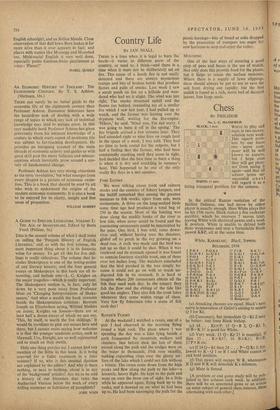FISH EATERS We were talking about trout and salmon stocks
and the enemies of fishery keepers, and the bailiff remarked that among the greatest menaces to fish stocks, apart from eels, were cormorants. A drive on the long-necked birds some time ago had produced a total bag of 250 in the season. Most of the hunting was done along the muddy banks of the river at low tide, when cover could be found and the journeying cormorants could be intercepted by the guns. One bird, I was told, came down- river and, without having seen the shooters, glided off to perch in the ivy growing on a dead tree. A stalk was made and the bird was put up so that it could he shot. When it was retrieved and its stomach opened it was found to contain fourteen sizeable trout, one of them over ten inches long. The watchers concluded that the bird perched in the tree simply be- cause it could not go on with so much un- digested fish in its stomach. It is hard to imagine where 200 cormorants obtain all the fish they need each day. In the estuary they fish the flow and the ebbing of the tide like good sea anglers. They also fish the trout lakes whenever they come within range of them. Very few fly fishermen take a stone of fish each day!










































 Previous page
Previous page